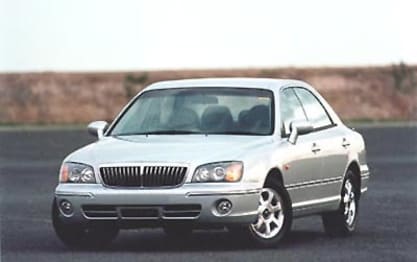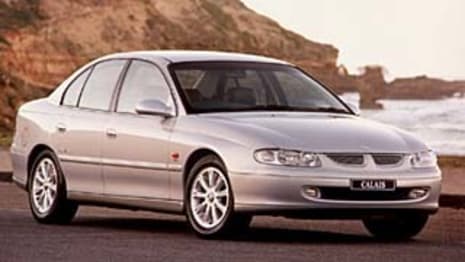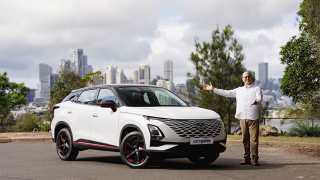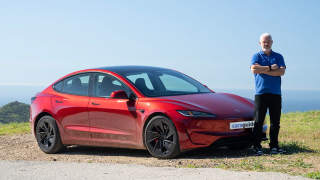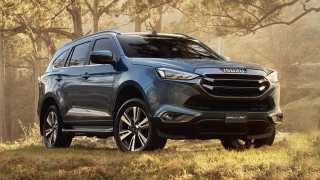
Used Hyundai Grandeur review: 1999-2003
- Hyundai Grandeur
- Hyundai Grandeur 1999
- Hyundai Grandeur 2000
- Hyundai Grandeur 2001
- Hyundai Grandeur 2002
- Hyundai Grandeur 2003
- Hyundai Grandeur Reviews
- Hyundai Reviews
- Hyundai Sedan Range
- Sedan
- Hyundai
- Used Car Reviews
- Buying tips
The name is a give-away to Hyundai’s grand aim for the Grandeur. It was to be an upmarket car packed with heaps of standard features, but at a Korean price. The question was whether a Korean company, best known for its low cost cars could actually build a prestige model that would compete against established models from long established and highly respected carmakers.
MODEL WATCH
While Hyundai has been selling cars on the local market for some time the company had a reputation for building cheap and cheerful small cars at a price that cash-strapped buyers couldn’t resist.
They were so cheap, comparatively speaking, that you could afford to take a gamble on things like build quality and reliability.
But when the company inevitably changed direction and began to look further upmarket where there were greater profits in the offing they began to appeal to a more demanding and discerning buyer.
Someone who pays $40,000-plus for a car has much higher expectations than someone who forks out $13,000.
The challenge for Hyundai was to meet those demands; the challenge for the buyer was to take the plunge and gamble the company would deliver.
The Grandeur was Hyundai’s deepest plunge into the local market. It was a medium-sized sedan with pretensions of grandeur; a car that would compete with both locally produced and imported prestige models.
Styling was very Asian, a little contrived, but beauty is in the eye of the beholder as the saying goes.
Splashes of chrome on the grille, rear garnish mould and door handles provided some sparkle to the exterior, while wood grain touches gave the interior an air of opulence.
A spring loaded bonnet badge, ala Mercedes-Benz, was added in 2002 in a further boost to prestige.
Power was provided by a competent 3.0-litre fuel-injected double overhead camshaft V6 engine that produced a useable 141 kW at 6000 revs and gave the 1554 kg Grandeur quite zippy performance.
The V6 worked in tandem with a five-speed electronically controlled auto trans driving the front wheels.
Power steering was standard, along with four-wheel disc brakes, ABS and alloy wheels.
As it should be when competing in the prestige market segment the Grandeur was packed with features. It had just about everything you could imagine, which underpinned its value-for-money appeal.
The base sedan came standard with air-conditioning, full instrumentation, power windows and mirrors, dual vanity mirrors, remote boot lid and fuel cap releases, six-speaker sound, power antenna, central locking and cloth seats.
Step up to the XG and you also received leather trim, keyless entry and alarm, climate control air-con, cruise, traction control, and memory settings on the driver’s seat.
It was the Korean formula applied to the prestige segment of the market; that is to deliver plenty of value at a competitive price.
IN THE SHOP
The basics of the Grandeur are reliable enough, but mechanics shudder when they arrive at the shop door, as they’re likely to have problems that can be hard to trace and sort out.
Korean-built cars in general have a poor reputation for electrics and the Grandeur is packed with systems that rely on good connections and wiring.
It’s quite common for owners to report warning lights coming on at random, which makes it difficult for mechanics to trace the cause of the problem. Often it’s found to be a poor connection in the wiring loom and that can take quite some time to locate.
Sensors, such as the speed and timing sensors on the engine, can also be a problem.
Spark plug leads are also troublesome, and changing them means removing the inlet manifold to get to the rear ones.
Signs of trouble are rough running of the engine, and sometimes random stalling while driving along, while problems with the transmission input and output speed sensors are signalled by erratic shifting, sometimes shifting up or down for no apparent reason, or simply refusing to shift.
Major service is at 90,000 km and that includes changing the cam timing belt. It also means changing spark plugs, and with long life platinum-tipped plugs that can be a costly exercise.
The keyless entry on the XG can be frustrating when it quits and leaves you stranded on the roadside. There’s no roadside solution, the car needs to be towed back to a dealer for correction.
IN A CRASH
With ABS standard on both models, and traction control standard on the XG, the Grandeur has the primary systems to get you out of trouble, and dual front airbags and seat belt pretensioners to protect you if you do get into trouble.
OWNERS SAY
Ray Clausen has driven his 2001 Grandeur XG in all conditions, urban and rural and has found it gives him with a sense of safety and ease of comfort. The interior is very well appointed and comfortably seats four adults, while boot space is ample. The battery had to be changed after 18 months, and the ‘Speed Sensor’ and ‘Check Engine’ sensor have also been replaced.
Merv Cramer says he has owned many cars over the years, including Holdens and Fords, and rates the Grandeur superior in all aspects, including build quality, attention to detail, and safety. His only gripe is poor resale value.
Don Russell loves his 2001 Grandeur. It is luxurious and comfortable, a lot of car for the money. He says it does everything very well and is economical, returning fuel consumption of 8.8 L/100 km. The only trouble has been with the remote locking.
The Grandeur’s price was enough to tempt Maurizio to buy one four years ago, but it hasn’t worked out such a good buy. It has been in the workshop more than it has been on the road, he says, with one problem after another. He now wishes he never bought this car; it’s a luxurious lemon with plenty of hidden costs.
Jeffrey Gillard has driven Statesmans, Volvos, LTDs, Saabs, and Jaguars, but now drives a 2000 Grandeur XG, which he says is the most reliable and best appointed car he’s have ever owned, and represents great value for money.
LOOK FOR
• Long list of standard features
• Economical on fuel
• Very comfortable for four adults
• Dual airbags for crash protection
• ABS standard
• Prone to minor faults, particularly electrics
• Poor resale value
THE BOTTOM LINE
Great value for money, but be aware that electrics are troublesome, and likely to be more so as age and kilometres catch up with the Grandeur.
RATING
50/100
Pricing
| Year | Price From | Price To |
|---|---|---|
| 2003 | $2,860 | $5,060 |
| 2002 | $2,640 | $5,060 |
| 2001 | $2,640 | $5,060 |
| 2000 | $2,640 | $5,060 |
| 1999 | $2,640 | $5,060 |
Pricing guides
Range and Specs
| Vehicle | Specs | Price* | |
|---|---|---|---|
| (base) | 3.0L, ULP, 5 SP SEQ AUTO | $2,640 – 4,180 | 1999 Hyundai Grandeur 1999 (base) Pricing and Specs |
| XG | 3.0L, ULP, 5 SP SEQ AUTO | $3,190 – 5,060 | 1999 Hyundai Grandeur 1999 XG Pricing and Specs |
Other cars to consider
$2,640
Lowest price, based on third party pricing data














